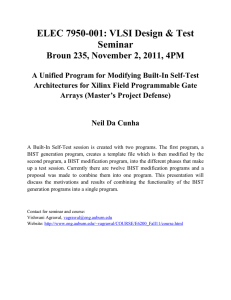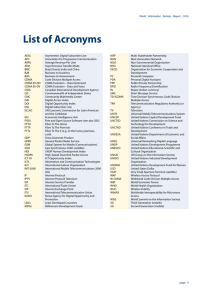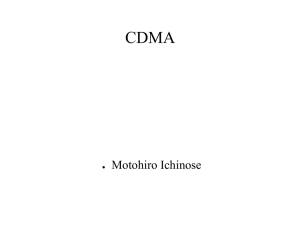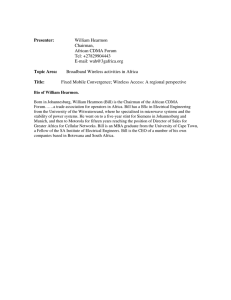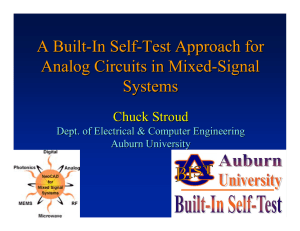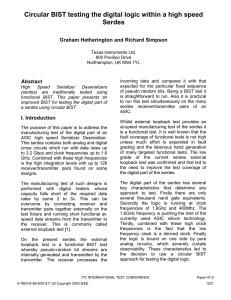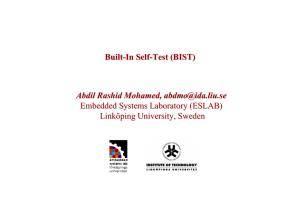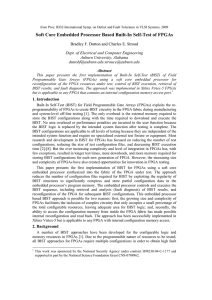Built-In Self-Test for 3 -Generation Mobile Users
advertisement
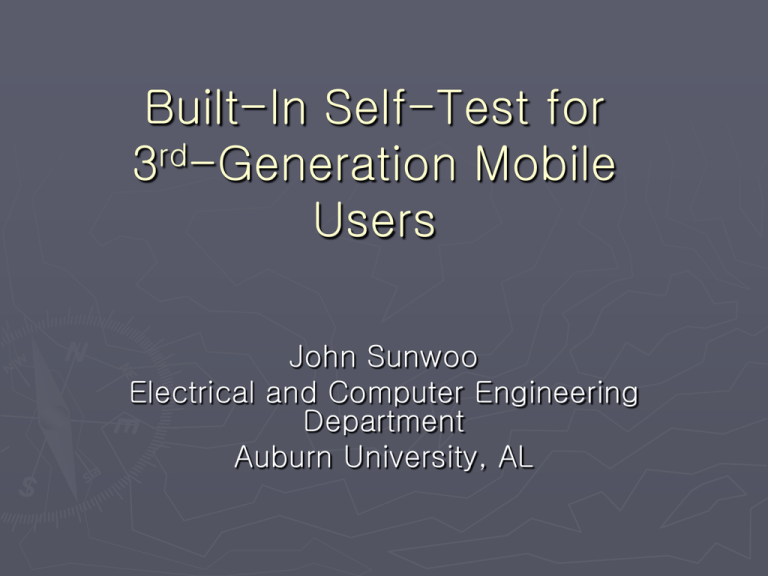
Built-In Self-Test for rd 3 -Generation Mobile Users John Sunwoo Electrical and Computer Engineering Department Auburn University, AL Smart Phones ► Download mp3 files and listen. ► Online shopping ► Online gaming ► GPS ► Mobile pay ► Wireless Key ► Start the car 2 Paying School Tuition Are you sure you are paying $5,000, not $50,000? 3 Near future 4 Objective ► Extensive usage of data transmissions via mobile devices Tx/Rx of critical data ► Make sure your mobile phone has no fault Users need to have access to high-level functional test The testing operation should be easy ► BIST for users 5 History of mobile communications - 2G has limited data capability 6 Cellular network - Base station is located each cell - Base station has physical connection to phone/data line - One user connect to other users via base stations 7 TDMA vs CDMA ► TDMA: Time Division Multiple Access Allows a number of users to access RF channel without interference by allocating unique time slots to each user within each channel ► CDMA: Code Division Multiple Access Every communicator will be allocated the entire channel all the time by having different code than the others 8 2G to 3G… Test challenges? ► 3G testing are related to the fact that it is fundamentally different than testing 2G networks ► Adjustment with just a power meter. (2G) ► Scan multiple neighboring base stations for interference that may affect network performance. (3G) 9 Case Study 10 Model ► Samsung SPH-I500 PDA Phone ► $500 ~ $600 ► CDMA 800Mhz/1900Mhz ► Built-in memory 32MB 11 USB Interface 12 Inside ► ► ► ► CDMA Processor Base band-to-radio frequency transmit processor IF-to-base band processor RF-to-IF processor 13 My BIST Approach ► Test control: Via USB ► TPG: CDMA processor ► ORA: CDMA processor ► DUT: Transceiver circuitry RFT3100 -> Power amplifier -> RFR3300 -> IFR3300 14 Plan BIST START TPG & ORA -BIST start -No need of additional hardware within certain assumptions. (Making assumptions means the design is could be very vague) -Is it an effective test? (Diagnostic resolution) 15 How did others tested RF device? ► Dr. Chatterjee Test point insertion algorithm for determining the best nodes for sensor insertion Sensors outputs can predict system and module specifications Area overhead < 15% 16 Dr. Dabrowski (Sweden) 17 Drawbacks ► John have never took RF classes. (Major) ► Qualcomm never responds my email for asking the actual data sheet of the MSM5100 modem. 18 Conclusions ► The applicability of the presented BIST has only for the higher-level model Mainly useful for hard faults such as spot defects rather than parametric faults. Only applicable in a stable production process or after the production. ► Exactly what consumer want 19 Good and Bad ► Avoids affecting the internal RF parts to noise or external disturbances. ► Fault diagnosis is not possible. 20 Future work ► Bluetooth Testing 2.4GHz No published paper on Bluetooth BIST 21

